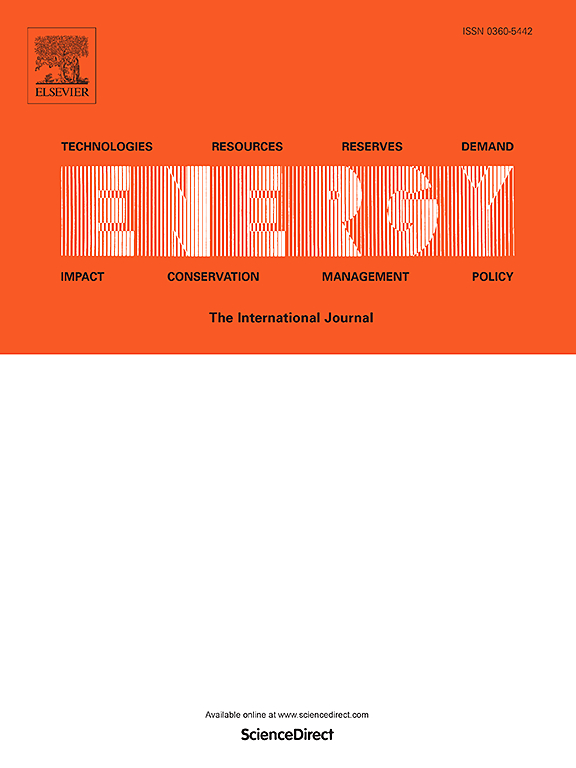Impact of zigzag tape on blade loads and aerodynamic wake in a vertical axis wind turbine: A Delft VAWT case study
IF 9
1区 工程技术
Q1 ENERGY & FUELS
引用次数: 0
Abstract
This study investigates the impact of zigzag tape on the aerodynamic performance and wake characteristics of the Delft Vertical Axis Wind Turbine (VAWT). The primary aim is to understand how the zigzag tape affects blade loads and the resulting aerodynamic wake. A comprehensive analysis was conducted using the Actuator Line Model (ALM) with airfoil characteristics measured in the wind tunnel at the Technical University of Denmark (DTU). Additionally, a 2-D CFD analysis with SST and -Re turbulence models were employed to evaluate the influence of laminar transition phenomena on rotor characteristics. Results indicate that while the zigzag tape linearizes the lift coefficient characteristic, it leads to a notable reduction in aerodynamic efficiency due to increased drag and decreased lift below the critical angle of attack. The simulations were performed at a tip-speed ratio (TSR) of 4.5 to avoid a dynamic stall, as this operating condition ensures that the rotor blades remain below the static stall threshold and large offshore VAWTs are designed to operate near their maximum aerodynamic efficiency () for the majority of their operational time. The aerodynamic wake behind the rotor also shows significant changes, with the zigzag tape promoting asymmetry and affecting the wake recovery distance. The study’s findings highlight the importance of considering surface contamination effects, represented by zigzag tape, in evaluating VAWT performance and wake behavior, offering valuable insights for wind turbine design and optimization.
求助全文
约1分钟内获得全文
求助全文
来源期刊

Energy
工程技术-能源与燃料
CiteScore
15.30
自引率
14.40%
发文量
0
审稿时长
14.2 weeks
期刊介绍:
Energy is a multidisciplinary, international journal that publishes research and analysis in the field of energy engineering. Our aim is to become a leading peer-reviewed platform and a trusted source of information for energy-related topics.
The journal covers a range of areas including mechanical engineering, thermal sciences, and energy analysis. We are particularly interested in research on energy modelling, prediction, integrated energy systems, planning, and management.
Additionally, we welcome papers on energy conservation, efficiency, biomass and bioenergy, renewable energy, electricity supply and demand, energy storage, buildings, and economic and policy issues. These topics should align with our broader multidisciplinary focus.
 求助内容:
求助内容: 应助结果提醒方式:
应助结果提醒方式:


